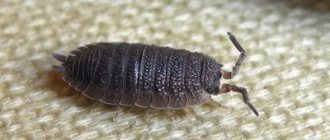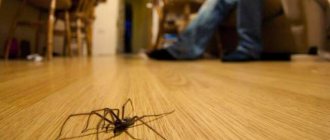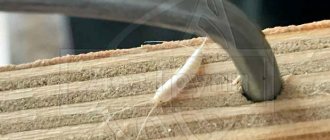- March 28, 2019
- Family
- Denis Dmitriev
This issue is relevant for many residents in multi-storey buildings. Damp rooms not only cause physical discomfort, but can also be dangerous to human health. It is difficult to breathe in rooms with high humidity levels. On the contrary, fungus and mold feel very comfortable in such conditions and multiply quickly. Due to the incorrect microclimate in the room, a whole range of problems sometimes arise from nasal congestion and sneezing to weakness and pain in the joints. To feel better, you need to know all the ways to reduce humidity in your apartment.
Causes
Finding out why the level is so high should be done at the very beginning, since this can directly affect the effectiveness of eliminating the excessive value of this indicator. Without free air circulation and some other conditions, it is definitely impossible to eliminate the problem. The main causes of occurrence can be listed as follows in the list below.
- High levels of precipitation in the region. Relevant during cold winter periods.
- Condensation constantly forms in the bathroom. It appears from hot water drawn into the bath. This room must be isolated from others in the apartment.
- Coastal air. In cities whose geographical location implies the close presence of a large amount of surface water, there is a high content of water vapor in the gas.
- In the kitchen, the level is often much higher than the level at which the humidity in the apartment should be under normal conditions. This is due to constant cooking of soups or borscht, as well as boiling water on the stove.
- Poor ventilation with insufficient air flow. Normally, there should be no stagnation in the premises. With normal circulation, polluted or excessively humid musty air does not arise.
- Drying clothes. Usually not recommended inside an apartment. It is best to hang washed items on the balcony or outside in the shade. The drying process itself involves the evaporation of moisture, which, of course, enters the room air.
- Water vapor and various pollutants from gas boilers that operate to maintain optimal indoor temperatures.
The best remedies for dampness
There are a number of industrial products that are designed to combat dampness and its consequences. However, each of them has its own advantages and disadvantages:
- Biocide. Removes fungus indoors and outdoors. It is distinguished by its high efficiency and equally high cost (from 800 rubles per 10 liters), which many consumers attribute to the lack of the product.
- Dali is a domestic drug that stands out for its affordability (from 150 rubles for 0.6 l) and high efficiency rates. The product can be applied to any surface, including wallpaper and ceramic tiles.
- Fongifluid. Sold as a ready-made solution that can be applied to most surfaces and coatings. Consumers note low consumption of the product and affordable cost (from 550 rubles for 2 liters).
Consequences of high humidity
Exceeding optimal values affects the health of people and animals, the quality of their sleep and overall well-being. Walls and furniture also suffer from high humidity. If we talk about the main consequences, we can cite those listed below.
- Insects and other pests. Termites and cockroaches equally love high humidity and will be happy to live in such an apartment.
- The smell of dampness. Characteristic aromas, probably familiar to everyone. Mold will only add new colors to the overall bouquet of odors.
- Rotting wood. Anything made of wood will gradually deteriorate. First of all, this concerns furniture.
- Mold and mildew. First of all, they appear in the kitchen and bathroom, since this is where the maximum concentration of humidity in the apartment is observed.
- Allergic reactions. Symptoms include runny nose, eye pain, sneezing and stuffy nose. An incorrect microclimate is very favorable for the proliferation of all kinds of bacteria.
The question of how to reduce indoor air humidity is especially relevant if children live in the family. Their immunity is not yet so strong, and therefore delay can lead to unwanted health problems.
Causes of moisture
The causes of excess moisture can be external and internal factors. At the initial stage, you should find the sources of its appearance. It is necessary to conduct a thorough inspection of the building structure:
- the reliability of the waterproofing and drainage structure and the integrity of the roofing system are checked;
- areas where damp spots appear are examined;
- window and door frames, pipe and roof joints are inspected.
When deciding how to get rid of humidity in the house, you should take into account that its appearance may be the result of human activity. The moisture content in the air increases during washing, cooking, watering indoor plants, and showering. A proper ventilation system will help dry your house. If there is no natural circulation of air masses in the house, favorable conditions for the appearance of fungal formations are created. They feel especially comfortable in warm and enclosed spaces. The process of their reproduction becomes avalanche-like if the air contains more than 70% moisture and temperatures exceed 18 degrees.
Before dealing with humidity, the level of its content in the air mass is determined. A hygrometer is used to carry out measurements. If there are elevated indicators, they find the sources of excess moisture and then move on to solving the problem. Let's look at the most common causes of increased moisture and ways to eliminate them.
Poor quality waterproofing of the base
The presence of groundwater close to the surface of the earth can pose a serious threat to the integrity of the foundation. In order to eliminate this problem, a waterproofing layer is laid on the foundation. In its absence, water can easily end up inside the room. The consequences can be quite sad:
- rotten wooden baseboards;
- wallpaper coming off the wall;
- collapsed plaster covering;
- fungus in places of greatest accumulation of moisture.
Poor foundation insulation needs to be repaired immediately. If the building structure does not provide for a basement, a horizontal waterproofing coating is installed on top of the basement covering. It will protect the walls from exposure to capillary moisture. As an alternative, vertical insulation is used. A trench is dug around the perimeter of the building. The wall covering is cleaned of dirt and a roll or coating waterproofing is applied on top.
Basement renovation
If damp spots appear on the ceiling and walls of the basement, you should first check the reliability of the waterproofing structure. If the insulation is installed poorly, moisture will accumulate on concrete and brick surfaces. In the future, the basement may be completely flooded with water. Groundwater easily penetrates into the porous coating.
To eliminate these phenomena, it is necessary to re-insulate the treated surfaces:
- they are first cleaned of fungal mold and disinfected using special solutions that prevent their formation;
- Cement mortar is applied to the seams;
- leaks are eliminated using quick-hardening compounds;
- a coating repair material is applied to the treated surface;
- Before laying the external insulation, the backfill of the base is excavated;
- hot bitumen or cold bitumen mastic is applied to the outer and outer surface of the walls;
- roofing felt is laid on top;
- the floor is covered with a clay layer and carefully compacted;
- sand or crushed stone is poured on top;
- final insulation is carried out using cement mortar;
- The ceiling surface is treated with a waterproofing paint coating.
Incorrect operation of the drainage system
When answering the question of how to remove dampness in a house, it is necessary to check the operation of the drainage structure. During long-term use, the drainage system may become clogged or destroyed. In such a situation, the surface of the walls will constantly get wet. The first step is to repair damaged pipes and gutters or replace them.
Additional protection of walls can be achieved using the following building materials:
- cement plaster;
- waterproof compositions with a mineral base;
- special mastics;
- paints with water-repellent properties;
- bitumen insulating coatings;
- vinyl siding;
- hanging PVC panels.
The norm of humidity in the apartment
Often people do not pay any attention to this indicator until the situation becomes completely neglected. Sudden illnesses, out of nowhere mold and hordes of dust mites - they all simply love excessively humid air. In stores today you can find special weather stations that have a built-in hygrometer. At the first suspicion, it is recommended to acquire such a device.
If we talk about the level of humidity in an apartment, then for the summer period the optimal value can be considered 60 percent, and for winter - 30-50 percent. If the indicators are higher, then you should think about protecting your own health and the furniture in your rooms. A humidity level in the bedroom of no more than 50 percent will help destroy dust mites and various allergens.
Preventive protection against dampness in the house
Maintaining optimal humidity conditions is a prerequisite for comfortable living in the house. Roof leaks, breaks in water pipes in the basement, failure of heating equipment - no one is immune from such situations. The moisture level is also affected by the abundance of moisture-loving plants and the presence of an aquarium in the house. In this case, the humidity level changes depending on:
- depending on the season - in autumn and spring, fluctuations are especially pronounced;
- from the operation of the heating system - insufficient heating contributes to the accumulation of moisture;
- from the operation of ventilation - over time, the ventilation ducts become clogged, which interferes with the free circulation of flows.
You can control humidity parameters using a special device - a hygrometer. To prevent dampness, the following must be done regularly.
Main types of hygrometers
Monitor the integrity of window seals
Check the integrity of the seal on the double-glazed windows. The fact is that they can be made of different materials, each of which has its own service life. If you hear a draft, then the seal needs to be replaced. Otherwise, cold air saturated with moisture will penetrate into the house through a loose connection of the window to the frame.
Examine walls and floors for cracks
Monitor the condition of the walls and floors. If you notice any cracks, take care of them. Damage penetrates into rooms through damaged finishing. To protect walls and ceilings from mold, treat them with special antifungal agents.
Check the integrity of plumbing units
Before the start of the heating season, carefully check the heating pipes and radiators. Pay special attention to the joints - this is where damage most often occurs. Even a slight discrepancy in the seam leads to leaks and, as a result, an increase in humidity.
Maintain quality heating
Centralized heating is not always enough to warm the room to a comfortable temperature. This leads to dampness and the appearance of fungus. To avoid the effects of high humidity, use electric heating devices.
Electric convectors Atlantic
At the same time, you can save on paying electricity bills. To do this, you need to invest in facade insulation. This will help move the dew point in the walls closer to the outer edge.
We recommend the product
Electric convector Atlantic F119 CMG TLC/M2 1500 11 reviews
In stock
Equipment and functions: selection of operating modes, shutdown when tipping over, frost protection, overheating protection, power button, wall mount, stationary legs (optional), power adjustment | Thermostat: electronic | Control: mechanical | Power, W: 1500 | Area, m²: 11-15 |
Constantly ventilate
Do not forget to ventilate at any temperature outside. To do this, open the windows for 5-10 minutes. A draft will pull out stale air, excess odors, moisture, and a fresh stream will come in.
Install fans, hoods
It is very important to properly organize air circulation in those rooms where there is constant contact with moisture. These rooms include the kitchen, bathroom, attic and basement.
The duct hoods presented on our website will help improve air exchange. If there is already a ventilation system, it is necessary to monitor its correct operation and, if necessary, perform service (cleaning).
Features of Vents Quietline 125 T
Use a dehumidifier
If moisture accumulates locally, such as in a laundry room, closet or closet, a dehumidifier can be used to combat it. Such devices consume energy economically and are easy to use. You can also use a split system - some models have an air dehumidification function. You can buy such air conditioners in Ukraine through our website.
Properly organize a complete ventilation system
A well-organized air exchange system plays a key role in the fight against excess humidity. If at the ventilation design stage the ventilation ducts are laid correctly (in accordance with the requirements of DBN V2.5-67-2013 and DSTU EN 15251, which regulate the operation of the ventilation system), then the air flows will be evenly distributed throughout the living area without the formation of stagnant areas. This will help prevent the appearance of dampness, blackening of corners and ceilings, and the proliferation of pathogenic microflora.
An example of organizing duct ventilation in a house
We recommend the product
Duct fan Blauberg Turbo 100 2 reviews
In stock
Power consumption, W: 23, 25 | Power supply, V: 230 | Features: bearing motor | Maximum air flow, m³/hour: 170, 220 | Noise level, dB: 27, 32 | Pipe diameter, mm: 100 |
If the humidity exceeds 60%, the content of dust mites, fungal spores, viruses and bacteria in the air increases sharply. As a result, the risk of contracting airborne infections increases. A properly designed and implemented ventilation system:
- reduces the concentration of pathogenic microorganisms in the air;
- influences thermal and humidity conditions;
- reduces the pressure difference inside and outside the room;
- eliminates drafts and noise pollution.
Reduce with heat
Heating appliances can be found in almost every apartment. Regular batteries can effectively help combat the formation of too much water vapor in the air. The action plan for how to reduce humidity in an apartment is quite simple in this case. It is necessary to turn on the gas boiler and light a fire in the stove.
The device will begin to heat the air in the room. As the temperature rises, the humidity will decrease. Heat treatment can destroy fungal formations. Particular attention should be paid to condensation on various surfaces. When it appears, you should, if possible, open the windows and ventilate the room.
Some nuances of sealing joints
If the tightness of the seams is broken and cracks appear in the walls, the corners in the room begin to become damp. In this state of affairs, there is only one way out: the waterproofing of the joints between the panels needs to be repaired, and microcracks in the walls need to be repaired.
After high-quality sealing, the walls should not gain moisture. They can become damp and leak only when the technology for sealing the seams is broken.
This should also be taken into account: if waterproofing of joints is carried out in one apartment, and not in the whole house, then the problem of dampness will not disappear. Moisture will penetrate into poorly sealed seams in an apartment on the floor above or on the technical floor, so although more slowly, it will find its way into the desired room.
Air dryers
The use of such devices will solve the problem of excessive humidity. Dehumidifiers dry the air and regulate the moisture level in the room. The size and cost of appliances can vary greatly. Larger and more expensive models are usually needed in larger rooms. You need to know not only how to reduce humidity in your home, but also which dehumidifier is most suitable for this purpose.
For example, adsorption models operate by having small bags of silica gel inside. This substance penetrates the water vapor and dries it. Regeneration in installations has a cold or hot mechanism. A refrigerated dehumidifier can be compared to a refrigerator or air conditioner. The gases pass through the coil and condense, and then enter the water bunker. It is worth noting that such devices slightly increase the air temperature in the room.
How to get rid of humidity in an apartment using a special device
If your hygrometer readings are off the charts and you are wondering how to remove humidity in your home, special equipment can help. In stores you can find a device called a dehumidifier or dehumidifier.
Excessively humid air passes through a special evaporator. The temperature inside is lower than in the room. Due to this, the moisture turns into condensation and flows into a container intended for this purpose. And drier air enters the room.
Houseplants
If representatives of the flora are actively growing inside the house, then certain problems with the humidity level may arise. The best solution is to rid the room of all plants for a certain period of time. The “empty” room will soon return to normal. You can also use special plants that can absorb moisture from gas mixtures. They can be a very effective and inexpensive way to solve the problem of how to reduce air humidity in an apartment.
It is worth asking the flower shop for tropical epiphytic plants, for example, ivy, Boston ferns, lilies or reed palms. If there are many other flora representatives in the apartment that humidify the air, then you should think about buying a greenhouse or terrarium. With a large number of plants, this step will definitely reduce the moisture level.
Taking a shower
If possible, it is better to open the windows during this procedure. It is not recommended to do this in wet weather. However, in summer, condensation will not even have time to form, and, consequently, air humidity will remain at a normal level. Long showers result in more steam production.
Also, instead of opening windows, you can use other tips on how to reduce humidity in the bathroom. You can put a fan and turn it on while you shower. It is also enough to simply open the bathroom door slightly after completing the water procedures. In addition, in the summer you can take a cold shower, which will be beneficial both for the room and for the health of the person himself.
Clothing and carpets
You can dry things in the bathroom only if there is good ventilation. Otherwise, you should not hang clothes there, but as an alternative, choose a balcony or shade outside. An even bigger mistake would be to hang wet clothes in hallways or living rooms. Such rooms rarely have good ventilation.
All carpets are capable of collecting moisture over time. The higher the humidity level, the faster they accumulate liquid inside themselves. A moldy or wet carpet with an unpleasant odor should most likely be taken to an industrial dry cleaner or paid for by professionals to come to your home and carry out the work right on site. This can be called a very effective way to reduce humidity in an apartment for those who have such floor coverings.
What is the effect of indoor dampness?
As already noted, high humidity leads to damage to finishing materials and interior items. Products made from paper, wood or leather are especially affected. Even door blocks can become deformed, and paintings and books can become unusable. All this leads to the need for repair work.
But most importantly, dampness can cause irreparable harm to the health of household members. Young children and elderly residents are most at risk. Spores of harmful microorganisms lead to exacerbation of chronic diseases. Once in the respiratory system, they cause allergic reactions.
Dampness can cause irreparable harm not only to the surfaces of walls, floors and ceilings, but also to health
Much more often, apartment residents suffer from colds, and they occur in a more acute form. Damp textiles in contact with the body contribute to the development of rheumatism.
Symptoms associated with mold and moisture in the home may include wheezing, runny nose, morning cough, eczema
It becomes uncomfortable to be near the apartment. People's concentration decreases, fatigue appears, and problems with performance arise. The unpleasant smell coming from clothes also does not add positive emotions. Finally, food shelf life is reduced.
Ventilation of premises
As noted above, without well-organized ventilation it is impossible to greatly influence the amount of water vapor in the air. Among the effective options for solving the problem, there are also quite pleasant ones. For example, you can simply open the window on a warm summer day and drink a cup of coffee and breathe in the fresh air.
First of all, two rooms need ventilation: the bathroom and the kitchen. If you need to decide how to reduce humidity in an apartment, then you need to start with this action. Of course, in a frosty winter it is hardly possible to provide round-the-clock ventilation. In this case, it is best to use air conditioners or fans.
Organization of ventilation
Natural ventilation is the easiest and cheapest way to get rid of dampness.
An economical way to get rid of humidity in an apartment is natural ventilation. The method is divided into unorganized and organized versions.
The first method assumes that you need to regularly open windows and doors to remove dampness. In wooden frames, flows seep through the cracks, but in metal-plastic windows there are no fresh inflows due to tightness.
Organized natural ventilation involves getting rid of damp air through a network of channels and risers, which can be built-in or mounted. The operating principle is based on pressure difference.
In an apartment, natural ventilation does not always work effectively, so it is recommended to use forced supply and removal of air flows. The system includes cleaning, temperature changes, and humidity reduction.
Walls and plumbing
Moisture can seep through cracks and holes. Condensation occurs, in turn, due to the entry of warm street air into the room. At some intervals, it is necessary to inspect the walls for cracks or holes in them.
When renovating, you should take care in advance of how to reduce the humidity in the room. For example, before hanging wallpaper, you should inspect the walls for mold. You will need to specially remove an entire layer of plaster, since conventional sprays are ineffective. After completely removing the area with mold, you can begin gluing.
Pipes and faucets also need regular inspection and timely replacement or repair. A leak inevitably leads to an increase in the humidity level in the room. In the bathroom, you should take a closer look at the joints that constantly get water. They need to be treated with sealant.
Remedies
Mold fungi are difficult to remove. In all cases, the final coating will have to be completely removed - wallpaper, plaster, and if the damage is deep, putty to the very base of the wall. The only exception may be a painted surface, since mold has difficulty penetrating a layer of paint, but spreads more strongly over its area.
The safest way to remove mold and dampness from your home is with the help of chemical compounds, some of which are easy to prepare at home:
- Antiseptic primers are special products with a high content of fungicides; with their help you can process the wall to a depth of 0.5 cm;
- Household bleaches - any type containing sodium hypochlorite will do;
- Hydrogen peroxide - 3% composition is used; due to the whitening effect, it is not suitable for treating painted surfaces;
- Potassium permanganate - found in everyday life in the form of a solution of potassium permanganate; used as a mixture - 15 g per 1 liter of water;
- Vinegar and citric acid are effective at the initial stage of mold development.
Even after eliminating the fungus, a characteristic unpleasant odor remains in the room. A simple method to get rid of it is to treat the floors with a baking soda solution. To prepare it, 15 g of the substance is dissolved in 100 ml of water.
Other ways to reduce
At some times of the year it can be difficult to use standard methods such as ventilation. If you need to solve a problem regarding how to reduce humidity in an apartment in winter, then you should use one of the tips below.
The easiest way is to buy a large bag of salt. A weight of 5 kg will be enough. Rock salt, being a natural hygroscopic material, is able to completely absorb surrounding moisture. If the salt is in the bag, then it must be opened slightly. You can pour the product into a regular basin. You will have to stir the salt periodically so that the moisture is evenly distributed inside.
You can remove the smell of dampness and excessive humidity in the apartment by placing cups and glasses with coffee beans in different corners of the rooms. If you have a bag of charcoal lying around after barbecue, you shouldn’t throw it away. Briquettes have adsorption properties and can absorb moisture for 2-3 months.
How to avoid high humidity
It is always necessary to think through such things in advance, for example, when moving into a new apartment. Instead of deciding how to reduce indoor humidity, you can use various preventive measures. The same furniture should not be placed too close to the walls. It is allowed to treat walls and floors with antifungal agents. It is worth considering a waterproofing system made from natural materials. If we are talking about a private house with a basement, then this room requires special care.
Moisture-absorbing materials in combination with daily dosed ventilation and a high-quality ventilation system can not only eliminate, but also prevent the appearance of high humidity in the apartment. Following simple rules of residence and monitoring the situation will help you identify and solve the problem in a timely manner. A hygrometer as a separate device or as part of a weather station will make it possible to monitor changes and take the necessary measures in a timely manner.
How to remove unpleasant odor from old furniture
A musty, unpleasant, pungent odor from furniture can come from various reasons, including increased humidity in the room, the development of fungal spores inside the upholstery, or urinary incontinence in a bedridden patient.
Inspect the product and assess the extent of damage. If the problem is fixable, use the following helpful tips.
Apple cider vinegar will help get rid of the specific smell of old furniture. Replacement with a regular table equivalent is allowed. Substance in the amount of 2 tbsp. l. mixed in 200 ml. water, shaken thoroughly. Apply the finished product to a cloth and carefully wipe all wooden elements of sofas, chairs, tables or armchairs. The procedure is repeated once a week.
For dark products, treatment with a solution of potassium permanganate (light pink color) is recommended. Do not try on light parts! They will change shade, darken!
It is recommended to treat a soft sofa and other upholstered furniture with the windows open. For processing, prepare a solution in advance: pour 400 ml of water into a container, add 1 tsp citric acid, 1 tsp vinegar. and 10 ml. dishwashing detergent or liquid soap. When mixed, the product forms a stable foam, which is applied over the upholstery with a brush. The process may smell strongly of vinegar, but it will dissipate quickly. Leave to act for 2-3 hours. Remove any remaining product by thoroughly cleaning with a coarse brush.
If you can’t remove the smell, replace the old furniture with new one or call a specialist. Dry cleaners have a range of products that can penetrate to great depths and dissolve stubborn stains. Professional help is expensive, but the costs are justified by the effect.











